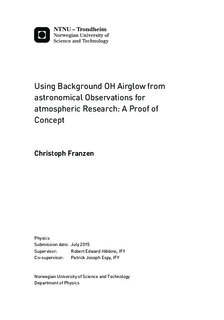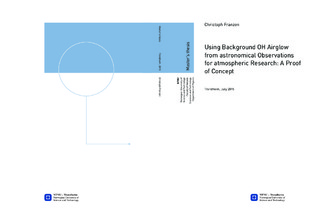| dc.description.abstract | The physics of the hydroxyl (OH) layer located in the Mesosphere and Lower Thermosphere (MLT) has become a focus of interest, as more and more climate models extend into this region. This is shown by the IPCC's last two assessment reports. Yet, the number of precise measurements of this region is rather limited.
This work presents a way to use the by-product of astronomical spectroscopic data to measure the temperature of the OH layer. Such observational images are presented together with the challenges they present and a way to reduce the image into a clean spectrum is given. A temperature fitting method was created, where unresolved lines can also be considered.
On the examples of two nights recorded at the Nordic Optical Telescope (NOT), it is demonstrated that this method works correctly and to high accuracy. Even for integrations times as small as 10.8 s the error on the temperature is approximately only 0.5 K. The temperature development over the course of a night is measured and the temperature profile in altitude is inferred with these data. The results are tested with the HITRAN model, and the MSIS model as well as compared with the work from Noll et al.
After this proof of concept follows a discussion of further research possible with this method. A routine is presented to fit the rotational level population No as well as the rotational temperature of the OH airglow. Knowing No, the heating rates can be calculated.
An experiment with dedicated telescope time at the NOT with the goal of measuring atmospheric waves of various frequencies is simulated in the last part of this thesis. It is shown, that this experiment is possible and will yield results with high signal to noise ratios. | |

